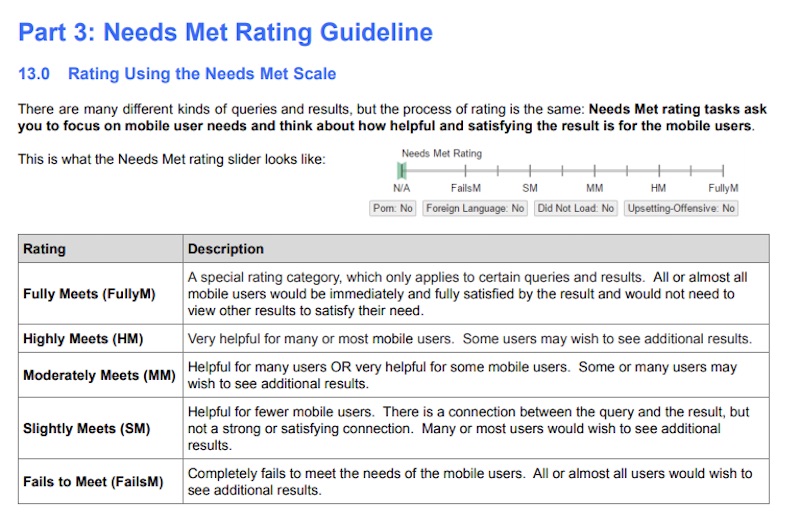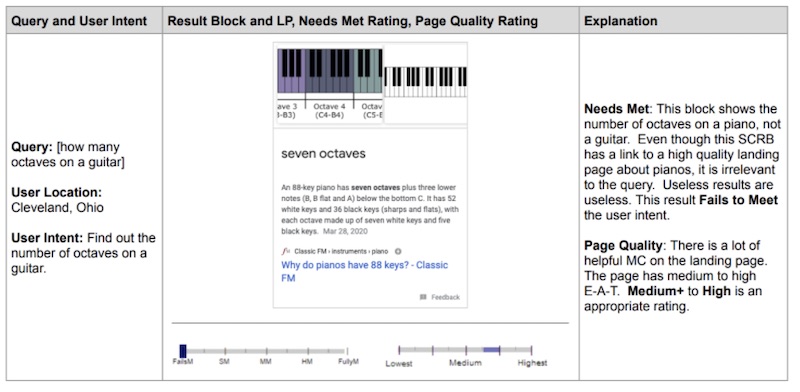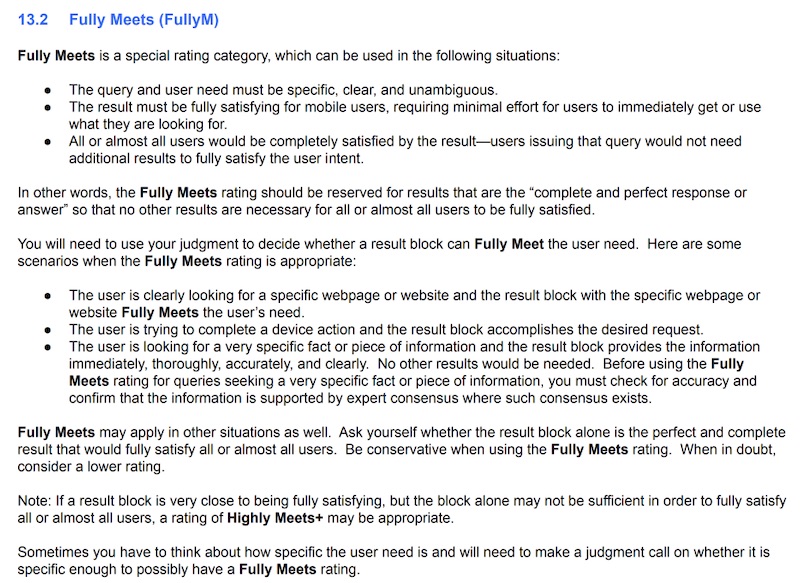Recently, Google shared some exciting upcoming changes to search with us in their SearchOn event. They also released an updated version of the Quality Raters’ Guidelines (QRG). It is clear to us that Google is working hard on doing a better job of satisfying user intent. We predict that in the future, the websites that will thrive are those that can produce content that has great E-A-T and also does an excellent job at providing detailed, thorough, well structured answers to a searcher’s query.
How BERT is impacting search
In October of 2019, Google shared a blog post in which they told us they are understanding searches better than ever before:
At its core, Search is about understanding language. It’s our job to figure out what you’re searching for and surface helpful information from the web, no matter how you spell or combine the words in your query. While we’ve continued to improve our language understanding capabilities over the years, we sometimes still don’t quite get it right, particularly with complex or conversational queries. In fact, that’s one of the reasons why people often use “keyword-ese,” typing strings of words that they think we’ll understand, but aren’t actually how they’d naturally ask a question.
With the latest advancements from our research team in the science of language understanding--made possible by machine learning--we’re making a significant improvement to how we understand queries, representing the biggest leap forward in the past five years, and one of the biggest leaps forward in the history of Search. “
In other words, Google is using machine learning to do a much better job at understanding what a searcher’s query really means. This is HUGE news.
When Google initially announced that BERT was going to be used to help understand the intent behind a query, they said this change would impact one in ten searches. In the recent Search On event, they said that now, almost every single English search is impacted by BERT.
We know that BERT has been helping Google better understand queries for at least a year now. With the recent news, we can see that Google is also getting better at understanding which particular passages of text on pages is the best answer for those queries as well.
What is “passage based ranking”?
This sounds like a big change to how Google search works. Danny Sullivan told us Google will soon be able to “identify individual passages in a web page and process them as perhaps being most relevant to a search.”
https://twitter.com/dannysullivan/status/1316822278038929408?s=20
In other words, instead of Google’s algorithms saying, “Ah, this page is a good result for this search query!”, they will be able to say, “This section of this page is a good result for this search query.”
Google’s Prabhakar Raghavan shared about how Google will use passages by saying, “We’ve recently made a breakthrough in ranking and are now able to not just index web pages, but individual passages from the pages. By better understanding the relevancy of specific passages, not just the overall page, we can find that needle-in-a-haystack information you’re looking for.”
(Google later clarified that they will not be indexing each passage individually. They will still index the full page, but they will be much better at determining which parts of the page are the ones to rank.)
We anticipate this will cause a massive shift in rankings for most queries.
In the past, if we did a search for a specific query like, “does vitamin D deficiency cause hair loss”, we would likely find the SERPS filled with detailed articles on vitamin D from medical websites that are recognized as giant medical authorities. When Google is faced with surfacing a site for a medical query, they will often prefer greatly authoritative sites. They likely would feel safe presenting the searcher with anything that is published from a site like Healthline, or the Mayo Clinic.
We anticipate that in the future, a searcher typing in this same query would still see articles from giant medical authorities, but they may also see smaller, less well known sites in the mix. Perhaps they might be shown a paragraph from an article written by a lesser known, yet qualified dermatologist who speaks specifically about a case they saw in which vitamin D deficiency was believed to be the cause of hair loss. Or, it is possible that Google may surface a forum discussion from a reputable site in which several people are discussing the fact that their doctor diagnosed them with hair loss issues connected to low vitamin D levels.
We believe Google’s goal with this change is to find sections of pages that do the best job of meeting the searcher’s needs. We still think E-A-T will be incredibly important as well. In order to rank for YMYL queries, you will likely need to have strong E-A-T combined with excellent, expert level content.
QRG changes show the importance of “needs met”
The other thing that has kept us busy recently was analyzing the recent changes made to Google’s Quality Raters’ Guidelines. While the definition of “needs met” did not change, there are several new examples and also more clarification to help the Raters decide whether a particular page does a good job at meeting a searcher’s needs.

To explain this further, let’s look at an example that was added to the QRG:

This example tells the Raters to look at a particular page that describes octaves. If you look at the page, without thinking of the query, the page itself is seen as good: “There is a lot of helpful MC [Main Content] on the landing page. The page has medium to high E-A-T.”
A page can still be high quality, have good E-A-T, yet not be the best answer for a searcher’s query.
In this example, even though the page is considered good, the content is not a good match for someone who is searching for “how many octaves on a guitar” because the page focuses on the number of octaves on a piano.
As such, a Quality Rater would be told to rate this page as medium to high quality in terms of Page Quality, but “fails to meet” in terms of needs met.
There are other examples given in the QRG that attempt to clarify how to determine whether a searcher’s needs have been met. In one example, the QRGs tell us that a Wikipedia page on ATM machines would meet the needs of someone who searched for “history of ATM machines”. But, if that person searched for “ATM”, they likely would not want to be shown an article all about ATM machines, but rather, they would like to see locations of ATMs near them. Even though the Wikipedia page was deemed to be high quality, and having strong E-A-T, the content was unlikely to meet the needs of this searcher.
Why is all of this important? Google’s Ben Gomes has told us about the importance of the QRG, saying, “You can view the rater guidelines as where we want the search algorithm to go...They don’t tell you how the algorithm is ranking results, but they fundamentally show what the algorithm should do.”
Google is training their Quality Raters to get better at determining whether a result really meets the needs of a searcher. When you combine this with the fact that Google is using BERT to determine which passages on pages are the most relevant answer for a query, we predict that future Google core updates will focus strongly on understanding the intent of a query, and finding sections of pages that do the best job at meeting the needs of the searcher.
How will these changes affect SEO?
We anticipate that with future core updates there will be some massive changes in rankings. However, it is possible that Google may implement these changes outside of a core update as John Mueller hinted at in a recent help hangout. Google has said that changes related to BERT will be rolling out “later this year”. Once fully rolled out, they will impact 7% of queries on Google search. To put this in context, the initial Panda rollout impacted 12% of results, while Penguin affected 3% of results.
This will be big.
We predict the sites that will win in terms of making improvements in 2021 and beyond, are ones that truly offer advice that is unique, expert-level and incredibly valuable.
We also predict that businesses that learn how to optimize for intent will do extremely well.
Optimizing for user intent
We have seen SEOs commenting lately that Google’s latest announcements on BERT will spark a rash of articles touting things like, “How to optimize for passage SEO!” as if this is a ludicrous thing to even consider. We think that it is not just possible to optimize our content to make it more attractive to Google once they start doing passage based ranking, but rather, it should be a major component of our work for most sites we work on.
Optimizing for user intent comes down to two things:
1) Figuring out what users who come to your pages are wanting to find.
2) Making your content the best option for those users.
How do the Quality Raters determine whether a searcher’s intent has been satisfied?
The QRGs give us loads of information on understanding intent. The word is in the current document 424 times!
The section on understanding user intent describes some broad ways in which we can classify intent.

The vast majority of optimization work we will be discussing is in regards to “Know” queries.
The Quality Raters are determine whether a particular result fully meets a user’s intent:

In order for a piece of content to be considered one that Fully Meets a searcher’s needs, it needs to be one that is the “complete and perfect response or answer, so that no other results are necessary for all or almost all users to be fully satisfied.” When evaluating your pages, you should pay close attention to the third bullet point in the screenshot above.
If you want to read more on this subject, these are incredibly interesting articles:
- Selecting Candidate Answer Passages by Bill Slawski
- Could Google Passage Based Indexing be Leveraging Bert? by Dawn Anderson
- How People Search: Understanding User Intent by Dan Taylor
- Searcher Intent: The Overlooked ‘Ranking Factor’ You Should be Optimizing For by Joshua Hardwick
It is also interesting to watch this statement from Frederic Dubut of Bing in which he says,
“Search Engines are shifting from keywords to intent at an accelerating pace. So if you imagine, a few years ago we were mostly based on keywords, then we are a keyword based search engine with a little bit of intent sprinkled on, and what we are looking forward to in 2020 is that search engines are going to be primarily intent based.”
He finished by saying, “For you in the SEO community, what that means is that some of the current practices around keyword research are probably going to become slowly obsolete and you’ll need to switch to intent research as a practice.”
Much of the discussion in the past on optimizing for intent has focused on determining whether a search query is likely to be transactional or informational and formatting your content based on intent. This is good...but we anticipate that many wins can be gained in the future by going even deeper.
We expect that the following will all be rewarded by Google soon:
- Content that is unique and expert written, as opposed to simply being well researched. A content writer can do great research and produce a well written article. But think back to our example search query of “Does Vitamin D deficiency cause hair loss”. There are answers to this question that a qualified dermatologist will be able to provide that will be much more specific and helpful than content that has simply aggregated information from other sources.
- Content that is well structured. Searchers like to skim. Good, helpful heading use can help the searcher find the particular passage they want to read much easier.
- Content that is truly uniquely valuable. We’re not just talking about a type of uniqueness that a tool could determine. If you place your content next to your top three competitors, is it incredibly obvious that yours is the best answer to satisfy the searcher’s intent so that they would not need to look at any other site?
Look for future articles, tips in our newsletter, and discussion on Marie’s weekly SEO podcast for more on how MHC is going to help our clients optimize further for intent. We are excited to analyze the winners and losers of Google’s future core updates to see if our predictions are correct!



Comments
I wonder if the passage based ranking is due in part to more and more long-form content that contains the best answer to the query, yet few would browse through the entire page to find it. Perhaps another type of rich snippet will accompany this.
I am also thinking that in passage based ranking google algorithm will extract the data from passage and will show the results as a snippet in the google search.
I always recommend my clients take search intent into account, especially when it comes to SEO vs PPC, so I’m not surprised to know this is becoming a bigger deal with Google.
Honestly, I cannot wait to see how passage-based ranking actually impacts rankings. I also believe this will be big and hopefully positively big. I would love to see how web pages like “SEO glossary” which give the definitions of hundreds of SEO terms will rank. Will they now be shown also for each term they describe or will still more thorough web pages specifically focused on a given topic be surfaced? Sticking to this example, I am wondering if a web page “SEO glossary” which among its definitions has a term like “backlink” can rank for “what is a backlink”. Maybe it can outrank a web page all about backlinks, what they are (their history, etc.) if Google assumes that the intent of a user to get a quick definition or maybe see related terms as well instead of an in-depth guide. I really cannot wait to see how it rolls out.